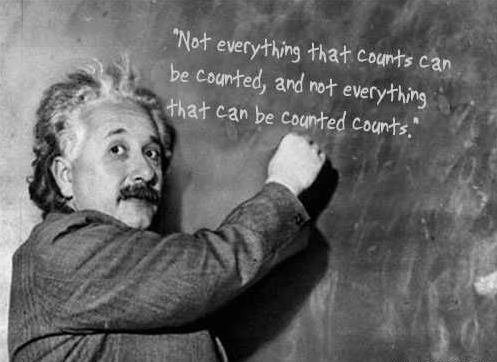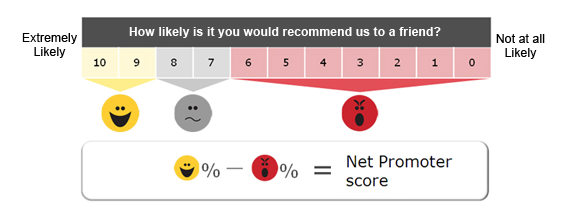Subscribe now and get the latest podcast releases delivered straight to your inbox.
The Most Important KPIs for Every Stage of the Inbound Methodology

Sep 12, 2013

 Inbound methodology. KPI's. Tracking your campaign. Those are all terms buzzing around your head and the Internet, but what do they really mean.
Inbound methodology. KPI's. Tracking your campaign. Those are all terms buzzing around your head and the Internet, but what do they really mean.
Those three terms are all about ensuring your campaign is reaching new heights.
How will you know if you're succeeding, if your not tracking and monitoring your marketing activities? The goal of your marketing strategy should be to turn visitors into customers and promoters of your business.
As a marketer, salesperson or c-level executive; you don't always have the time to look through a pile of reports and metrics to see if your making use of your resources. The same concept is used those creating a PowerPoint presentation. Your audience might not catch the most important points you were trying to make. Hence the idea of key takeaways slides. What I'm trying to say is that your most important metrics should easy to find in out place.
Now lets pause for a moment.
There are a number of metrics out there from revenue to customer acquisition cost to number of followers, but in the bigger scope of things they won't give you any insight into how effectively you're implementing the inbound methodology.

It all comes down to attracting, converting, closing and delighting. Here's a look at the key performance indicators you should be tracking within each stage.
Metrics for Attracting Your Audience
A significant portion of marketing is dedicated to attracting your audience. There's everything from identifying and crafting your buyer personas to developing relevant and remarkable content your audience will want to read. But the buck doesn't stop there. It's about ensuring all the hard work your marketing team is doing is paying off.
Traffic
Now this might seem completely obvious, but you don't just want to receive 40,000 visitors to your site a month. You want to ensure that those visitors are the right visitors. By the "right" visitor I'm talking about someone that didn't just stumble across your site and only views one page. You might want to take a closer look at what sources are bringing visitors to your site. Where is most of your traffic coming from? Is it organic, direct, email, social media, or PPC?
The quality of your website visitors leads us into the next metric. Are your visitors converting?
Conversion Rates
A quick an easy way to tell if your attracting the right visitors is to identify if any of those visitors are converting into leads.
Don't just look at the overall visitor to lead ratio. Dig a little deeper. Is there a particular page with a significantly higher or lower rate? Use that information to revamp your content. Perhaps the content on way isn't inline with the offer you're providing. Don't let one word or idea turn your visitors away. You want to push them down the sales funnel. Conversion rates can be calculated for each page on your site that has a lead capture form.
Monthly Lead Generation
This is slightly similar to your visitor to lead ratio. Not only do want to know how many people are coming to your site, but you want to know how many leads you're generating. Are you reaching your monthly goal? Each month sales and marketing should sit down to determine their monthly goal. Therefore, throughout the month each team should make adjustments to ensure they'll reach that goal.
Social Media Reach
A great outlet for engaging and building relationships with your visitors and audience is social media. Not only should you use appropriate social media channels like Facebook, Twitter, LinkedIn, etc. to promote your content, it should also be a place to respond to comments and answer any questions. Be a consultant or expert these people can turn to.
Your social media reach can give you a good understanding of how many people your content is influencing. Even though knowing how many people your following is important. Your overall goal should be to determine if those individuals are interacting with your company and converting.
Content Creation
One question your content manager or marketing manager should be asking themselves on a routinely basis is if the content their creating is inline with the needs and wants of their audience? If not, you aren't targeting them and they'll go to another company to find the information they're looking for.
The content you create, also shouldn't be the same as every other company. Remember to be remarkable. Each article you write should be attractive to one or more of your buyer personas.
Inbound Links
Can your audience find your content? Check to see how many other companies are linking to your content. Inbound links are a great way to increase the reach of your company, especially if it's on a site like Fast Company or the New York Times.
It gives you the opportunity to generate more website visitors, who clink on that external link on the other person’s blog or site.
Metrics to Ensure Visitors and Leads are Converting
Now that you've used your blog and social media to attract visitors, your next step is to develop TOFU, MOFU, and BOFU offers that help your visitors convert into leads. Your overall goal should be to educate and show your leads that your product or service can help them relieve a pain point. This stage is all about being able to capture more information about your audience.
Keep a track of this metric.
Lead to Quality Lead
Now before you say, what's the difference? I'm going to stop you. Yes, a lead is something that downloaded an offer on your site, but are they interested in the service or product you're providing?
Often times a lead could just be someone downloading your offer to educate themselves for a project, could be using your content to gain more insight for an article they're writing, or they could be evangelists, whereas a quality lead is someone that has a need for your product or service.
Go through your leads one by one each month to determine if you have any quality leads that you can start nurturing to continue educating them.
Metrics for Closing
Transforming your leads into customers isn't just for sales. Marketing also plays a significant part. While sales is in contact with your leads, marketing should be creating content and educating them to ensure they're sales ready.
Lead to Customer Ratio
After all of your marketing efforts, it’s important to know how many leads your sales team is able to close. You will want to calculate both your sales qualified lead conversion rate and sales accepted lead conversion rate.
What’s the difference between the two?
- Sales Qualified Leads are leads considered to be sales ready based on their lead score or specific activities/triggers they completed. Most companies would consider a lead who filled out a form, such as “contact a rep” a lead who is ready to buy your service or product. For example, a waste management company with a lead who filled out the form ”rent a dumpster”, would be considered a sales qualified lead.
- Sales Accepted Leads are leads your sales team considers opportunities, and have either contacted the lead directly or a scheduled call.
This marketing KPI is extremely useful for sales and marketing to help determine how successful their campaigns are.
Ask yourself the following questions:
- Is my campaign capturing leads?
- Is our CRM successfully passing qualified leads to sales at the right time?
- Do you have a high closing rate?
Time Spent to Close a Lead
Every lead is different. Not only in what their pain points are but also in the time it might take you to turn those leads into customers. You might find that it takes you 60 days to close one lead, whereas another takes 8 or more months to close. You might want to consider the time you put into making connect calls, the inbound marketing assessment, the goal setting call and all the other necessary elements of your sales cycle.
Consider looking at your quality lead to BOFU lead ratio. Even though I'm talking about time this ratio can play an important role. Did you know that quality leads actually have a longer sales cycle than BOFU leads? The reason behind this is because your BOFU leads already see the need for your product or service and are interested in talking to your sales team. Whereas, a quality lead might see a need for your product or service they might not be educated enough or ready to talk to your sales team. They might want to perform more research.
Metrics to Ensure You're Delighting Your Customers
Marketing doesn't just stop once you've converted a lead into a customer. The whole inbound methodology is about turning your customers into promoters of your company. There is nothing better than having an advocate of your company.
According to Jim Rohn, an American author and motivational speak, “One customer well taken care of could be more valuable than $10,000 worth of advertising.” Think of your customers as a walking billboard. There is no better resource than your clients. In fact, 65% of new business actually comes from referrals.
Net Promoter Score
Customer satisfaction is key. Do you know how they feel about your company? A great starting point is to identify your net promoter score, which is a great tool to help you gauge the loyalty of your customers. Ideally everyone wants to receive a 10, but often times that can be unrealistic.

The ROI and impact of a happy customer is huge. Customers are influential in spreading the word. As a promoter of your company, it’s likely that your customers will be referring your company to their network of contacts and connections, helping you expand your reach.
Referrals / Testimonials
Are your current or past customers referring your company to group of connections? The number of referrals you receive whether you have a referral system or not, is a good indication of how happy your customers are with your product or service. Also, don't be afraid to ask them to write a testimonial for your company. Their opinion will help others make the decision to work with you. People are looking for prove. They want to know that you're going to help them solve their problems.
Free Assessment: